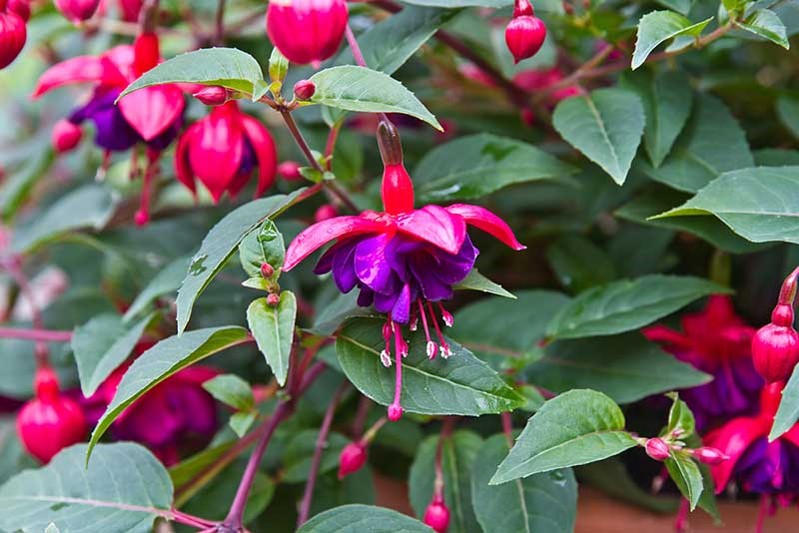Fuchsia plant is a beautiful flower that everybody loves to grow. These plants are among the most visually appealing potted blooming plants on the market. Providing water for fuchsia plants is essential for creating plants with ample blossoms, so take care of them. More care should be given to the root zone since it can dry out quickly than others because most are cultivated in hanging baskets.

Requirements for Fuchsia
Meters known as moisture meters are useful for evaluating the amount of water remaining in the soil while they don’t provide information on at what time and in the way water is desirable by the plant. It’s actually fairly simple to water a fuchsia plant.
They require consistent wetness but cannot be submerged in muddy water. In general, plants in the ground are further resistant to drier days whereas plants in the pots will require a little more water.
Although most fuchsias aren’t particularly resilient and are only grown up as annuals, their quick growth, even if just for a single season, helps them stand out in the landscape. The plant will flower in all seasons if it receives consistent moisture. Fuchsias are not able to resist of having wet roots. Soil should be well drained and good drainage holes should be present on pots. Plants in the soil must also have loose, healthy soil that drains well. Hydrating the fuchsia plants properly may necessitate the use of a moisture meter .
Containerized fuchsia plants must be hydrated till the water flows away from the holes. This is to aid in the removal of extra salts from the water caused by fertilization. When the municipality’s water contains fluoride, you might need to explore utilizing rain or any other water. Some pollutants are toxic to plants, and they can get diseases from consuming water. Hydrating the plants that are in soil must be done till the soil is evenly wet round the root zone.
A developed plant’s root zone is usually 3 to 6 inches away from the main stem. Before the addition of extra water, just wait and see to avoid standing puddles, and confirm whether the moisture is soaking into the root region. Overwintering fuchsia plants necessitates a unique strategy. Even in colder locations, fragile fuchsia can be saved by bringing it inside. Take plants inside earlier the first frost and store them somewhere cool and dry, such the dark room .
Hydrating a fuchsia plant that has been overwintered is necessary, however, the plant’s requirements in the winter are minor. Hydrating twice throughout the inactive period is usually enough. Some planters suggest hydrating during a significant holiday in the winter to avoid overlooking.
If the plant is close to a fan or radiator, it may need a little extra water because it will speedily dehydrate .In the spring, begin irrigating more frequently and progressively restore the plant to the outside. Your lovely flowering fuchsia will be in full bloom in no time, decorating your landscape.